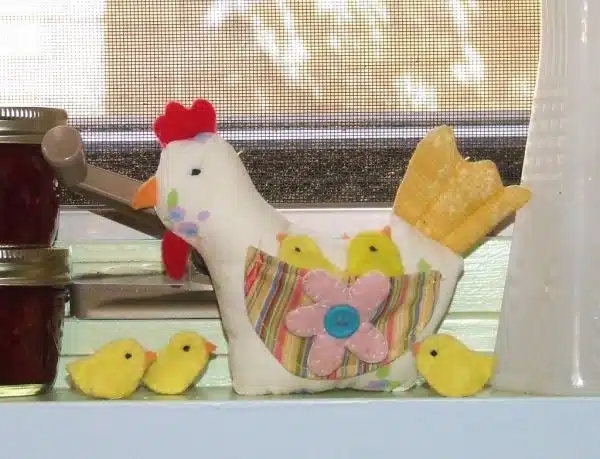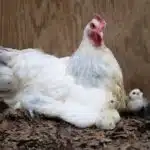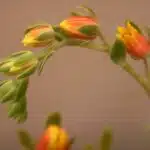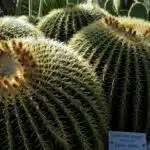Hens and chicks plants, also known as sempervivum, are a popular choice for gardeners looking to add some greenery to their homes. These hardy succulents are incredibly easy to care for and can thrive in a variety of environments. However, growing hens and chicks plants in pots requires a bit more attention to detail than planting them directly in the ground.
As a horticulture specialist, I have had the pleasure of working with hens and chicks plants for many years. In this article, I will provide you with practical tips on how to grow hens and chicks plants in pots successfully. Whether you’re a seasoned gardener or just starting out, these tips will help you create healthy and vibrant hens and chicks plants that will add beauty to your home or office space.
Understanding Hens And Chicks Plants
Hens and chicks plants are peculiar-looking succulents that can make your garden or indoor space stand out. They are named so because of their unique growth habit, where the main “hen” plant produces smaller “chicks” around it. This gives them a visually appealing rosette-like appearance that can be quite intriguing to look at.
Caring for hens and chicks plants is not a difficult task, but it does require some attention to detail. These plants love well-draining soil and require good airflow around their leaves to prevent rotting. Additionally, they thrive in sunny spots and require minimal watering. Overwatering can lead to root rot, which can kill the plant quickly.
There are many unique varieties of hens and chicks that you can choose from, each with its own distinct features. Some have bright green leaves, while others have red or purple tips on their foliage. Others have small white hairs on their leaves, giving them a fuzzy appearance. Whatever your preference may be, there is surely a variety of hens and chicks out there that will suit your taste perfectly! Now that you understand the basics of hens and chicks plants let’s move on to choosing the right pot for them.
Choosing The Right Pot
When it comes to selecting the right pot for hens and chicks plants, there are a few things to keep in mind. First and foremost, the pot should have good drainage. These plants are highly susceptible to root rot, so it’s important that any excess water can easily drain out of the pot. Additionally, you’ll want a pot that is deep enough for the roots to grow and has enough space for the plant to spread out.
In terms of decorative options, there are plenty of choices available. Terracotta pots are a classic option and work well for hens and chicks plants since they allow air to circulate around the roots. However, if you live in an area with hot summers, you may want to opt for a lighter-colored pot that won’t absorb as much heat. Ceramic pots come in many different colors and designs, making them another popular choice.
When it comes to ideal materials, clay or ceramic pots tend to be popular choices since they both provide good drainage and airflow. However, plastic pots can work just as well as long as they have adequate drainage holes. Ultimately, your choice will depend on your personal preference and what works best for your growing environment.
Moving forward into selecting the proper soil, it’s important to ensure that your hens and chicks plants are growing in the right type of soil mixture.
Selecting The Proper Soil
After selecting the right pot for your hens and chicks plant, the next step is soil preparation. This is an essential aspect of ensuring that your plant thrives in its new environment. The type of soil you use should be able to retain moisture, drain well and provide enough nutrients for your plant to grow. It is important to note that hens and chicks plants thrive in well-draining soils with a slightly acidic pH between 6.0-7.5.
When selecting the pot size, it is crucial to consider the size of your plant at maturity. Hens and chicks plants have shallow roots; therefore, it is best to choose a shallow pot that will accommodate their root system comfortably without leaving too much space around them. Using a large pot may cause waterlogging, which can lead to root rot, while using a smaller pot may constrain their growth potential.
Table: Soil Preparation and Pot Selection
| Soil Preparation | Pot Size Selection |
|---|---|
| Use well-draining soil | Choose a shallow pot |
| Retain moisture | Consider plant size at maturity |
| Provide sufficient nutrients | Avoid using too large pots |
In conclusion, preparing the right soil for your hens and chicks plant coupled with selecting the appropriate pot size are critical factors in ensuring healthy growth of this succulent species. You want to ensure that you choose a soil type that can retain moisture yet still drain well enough to prevent overwatering or under-watering issues. Additionally, choosing an appropriately sized pot will enable you to prevent issues such as water logging or stunted growth due to limited space available for root development. The next step involves providing adequate drainage for your potted hens and chicks plants.
Providing Adequate Drainage
- Growing hens and chicks plants in pots requires proper drainage to ensure the health of the plants.
- To achieve adequate drainage, it is advisable to use pots with drainage holes in the bottom.
- Additionally, adding a layer of gravel to the bottom of the pot can further improve drainage.
- The amount of gravel should be proportionate to the size of the pot to ensure an efficient drainage system.
- Clay-based soils are known to have poor drainage, so gardeners should consider mixing in organic matter to improve drainage.
- Regularly checking the moisture levels of the soil is also necessary to ensure that the hens and chicks plants stay healthy.
Using Pots With Drainage Holes
To successfully grow hens and chicks plants in pots, providing adequate drainage is crucial. One important aspect of this is using pots with drainage holes. These holes allow excess water to escape from the soil, preventing root rot and other issues that can arise from waterlogged soil.
When choosing a pot with drainage holes for your hens and chicks, there are many decorative options available to suit any style or taste. Terra cotta pots are a classic choice that provides breathability for the plant roots, while more modern options like ceramic or metal containers offer durability and style. It’s important to choose a pot that’s appropriately sized for the plant, with enough room for it to grow.
Maintenance tips for pots with drainage holes include periodically checking the bottom tray or saucer to ensure there isn’t an accumulation of standing water. This can lead to pests or disease problems. It’s also important to use high-quality potting soil that will allow for proper drainage while retaining moisture. With proper care and attention, hens and chicks planted in well-draining pots can thrive and add beauty to any indoor or outdoor space.
Adding Gravel To Pot’s Bottom
Providing adequate drainage is crucial when growing hens and chicks plants in pots. One common method to improve drainage is by adding a layer of gravel to the bottom of the pot before adding soil. The benefits of adding gravel include improving water flow, reducing soil compaction, and preventing soil from escaping through the drainage holes.
When adding gravel to the pot’s bottom, it’s important to use the right type of gravel. Coarse-grained gravel like pea gravel or aquarium stones are ideal as they allow for better water flow compared to finer-grained gravel. Additionally, using a layer that’s about an inch thick is enough to provide sufficient drainage without filling up too much space in the pot.
While adding a layer of gravel can help improve drainage, it’s not always necessary. If you’re using a pot with good drainage holes and high-quality potting soil that allows for proper water flow, then additional steps may not be needed. However, if you’re experiencing issues with waterlogged soil or poor plant growth due to inadequate drainage, then adding a layer of coarse-grained gravel can make a significant difference in maintaining healthy hens and chicks plants.
Improving Soil Drainage
Creating proper drainage is a significant factor to consider when growing hens and chicks plants in containers. Good drainage not only prevents root rot and fungal growth, but it also improves soil structure and allows roots to absorb nutrients efficiently. One way to improve soil drainage is by creating an ideal soil mix that promotes water flow while retaining moisture. A good soil mix should consist of equal parts of coarse sand, perlite, peat moss, and potting soil. This mixture helps prevent erosion while also ensuring that the plant has sufficient nutrients.
In addition to creating good soil structure, preventing erosion is another essential aspect of sustainable gardening. Erosion can lead to the loss of valuable topsoil, which affects plant growth and nutrient uptake. To prevent erosion in potted plants, adding a layer of mulch on top of the soil can aid in retaining moisture while reducing water runoff. Organic materials like straw or shredded leaves are excellent options as they decompose over time and provide additional nutrients to the plant.
Lastly, rainwater harvesting is an effective way to maintain sustainable gardening practices while providing adequate water supply for plants. Collecting rainwater using barrels or buckets allows growers to use natural resources instead of relying on tap water that may contain chemicals like chlorine or fluoride that could harm delicate plant roots. Using collected rainwater also reduces waste and conserves energy used in treating tap water for consumption purposes. By implementing these strategies for improving drainage, preventing erosion, and utilizing natural resources like rainwater harvesting, growers can ensure healthy and thriving hens and chicks plants in pots.
Watering Techniques
Watering Techniques:
As the saying goes, “A plant without water is like a person without food.” Watering frequency is essential for hens and chicks plants to thrive in pots. These plants are succulents, meaning they store water in their leaves, stems, and roots. However, this does not mean that they do not require regular watering. Too much or too little water can cause harm to these plants.
It is necessary to check the soil moisture regularly when watering your hens and chicks plants. These plants prefer well-draining soil that allows excess water to drain away quickly. Overwatering can lead to root rot, which is lethal to succulent plants. On the other hand, underwatering can cause the plant’s leaves to become dry and shriveled.
To ensure optimal growth for your hens and chicks plants in pots, it is crucial to water them correctly. The best way to determine if your plant needs watering is by sticking your finger into the soil up to the first knuckle. If the soil feels dry at this depth, it’s time to water your plant. Remember that each pot has different drainage capabilities that affect how often you should water your hens and chicks plant.
Fertilizing Your Plants
Fertilizing your hens and chicks plant is essential to keeping them healthy and vibrant. One crucial factor to consider is the type of fertilizer you use. You have two main options: organic or chemical fertilizers. Organic fertilizers are made from natural sources like manure, compost, and bone meal. They release nutrients slowly over time, which can be beneficial for the long-term health of your plants.
On the other hand, chemical fertilizers are synthetic products that provide a quick nutrient boost to your plants. They are often cheaper than organic fertilizers but can have negative impacts on the environment if not used correctly. It’s important to note that both types of fertilizers have their advantages and disadvantages, so it’s up to you to decide which one fits your needs best.
Another critical aspect of fertilizing your hens and chicks plant is the frequency of application. Over-fertilization can lead to burnt roots and stunted growth, while under-fertilization can cause yellowing leaves and poor blooms. A general rule of thumb is to apply fertilizer once every two weeks during the growing season (spring through fall). However, it’s always best to follow the instructions on your specific fertilizer package since different brands may have different recommendations.
Ensuring proper sunlight is another crucial step in growing healthy hens and chicks plants in pots. These succulents require at least six hours of direct sunlight daily for optimal growth. If you’re growing them indoors, place them near a south-facing window or under artificial grow lights. If you’re growing them outdoors, choose a spot with plenty of sun exposure but also some protection from harsh afternoon sun rays. With proper sunlight and regular fertilization, your hens and chicks plants will thrive in their pots for years to come.
Ensuring Proper Sunlight
After fertilizing your hens and chicks plants, it’s time to ensure they receive proper sunlight. Did you know that these plants require at least six hours of direct sunlight daily to thrive? In fact, a study by the University of Illinois found that hens and chicks plants grown in optimal lighting conditions produced larger and more vibrant rosettes.
Sunlight duration is crucial for the growth of these plants, but so is optimal positioning. Hens and chicks plants should be placed in an area where they can receive the most amount of sunlight. If you live in an area with harsh afternoon sun, consider moving your potted plants to a spot that receives morning or late afternoon sun instead. This way, your plant won’t experience sunburn or scorching on its leaves.
Remember that controlling temperature and humidity are also essential factors for growing healthy hens and chicks plants. To ensure this, it’s recommended to keep indoor temperatures between 60-75°F (15-24°C) and provide adequate ventilation to prevent mold growth. In areas with high humidity levels, placing a dehumidifier nearby can help regulate moisture levels in the air. By following these guidelines, you’ll be able to create an environment perfect for your hens and chicks plant to flourish.
Controlling Temperature And Humidity
- Sunlight is an important factor in the growth of hens and chicks plants, as too much direct sunlight can damage the plant’s leaves and too little can result in poor growth.
- Temperature regulation is also important, as hens and chicks prefer temperatures between 15-25°C and can tolerate a range of 5-35°C.
- Humidity regulation can be achieved by regularly misting the plants with water, so as to maintain a humidity level of 40-50%.
- Growing hens and chicks plants in pots is an effective way to manage the levels of sunlight, as the pots can be moved around to control the amount of direct sunlight the plant is exposed to.
- Temperature regulation in potted hens and chicks plants can be achieved by placing the pot in a shaded area to avoid excessive heat, or keeping the pot indoors during periods of extreme cold.
- Humidity regulation for potted hens and chicks plants can be achieved by regularly misting the leaves with water, as well as using a humidifier to increase the humidity levels in the immediate environment.
Managing Sunlight
Maximizing growth of hens and chicks plants in pots requires proper management of sunlight. These succulent plants thrive in bright light, but too much direct sun can cause damage to their leaves. As a horticulture specialist, it is important to understand how to control the amount of sunlight your plants receive to ensure optimal growth and health.
One way to manage sunlight is by placing your hens and chicks pots in a location that receives partial shade. This will protect the plants from direct afternoon sun, which can be intense and damaging. Another option is to use a sheer curtain or shade cloth to filter the light without completely blocking it out. This will help prevent sunburn on the leaves while still allowing enough light for healthy growth.
It’s crucial to avoid sun damage when growing hens and chicks in pots. Sunburned leaves will turn brown and fall off, leaving ugly scars on the plant. By managing the amount of sunlight your plants receive, you can prevent this damage and keep them looking healthy and vibrant. With proper care, your hens and chicks will continue to grow and multiply, providing you with beautiful additions to your indoor or outdoor space for years to come.
Temperature Regulation
As a horticulture specialist, it is essential to understand the importance of temperature regulation in the growth and development of plants. Temperature plays a crucial role in determining the optimal range for plant growth and survival. For hens and chicks plants, maintaining an ideal temperature range is critical to ensure healthy growth.
Seasonal changes can significantly affect the temperature levels in your growing environment. During the summer months, excessive heat can cause wilting and dehydration, leading to stunted growth or death of your plants. In contrast, during the winter months, extreme cold temperatures can lead to frost damage or even kill your plants. Therefore, as a horticulturist, it’s vital to regulate the temperature carefully to avoid such conditions that may harm your hens and chicks’ health.
To regulate temperature effectively for hens and chicks plants grown in pots, you can use various techniques such as insulation with a suitable covering material or adjusting lighting intensity. A well-insulated pot will help maintain warm soil temperatures during colder seasons while also keeping it cool during hot summers. Additionally, adjusting lighting intensity by using shade cloths or curtains can help reduce heat buildup inside your growing space while still providing enough light for photosynthesis.
In conclusion, regulating temperature is an important aspect of successful hens and chicks plant care. By understanding the optimal range for these succulent plants and implementing proper techniques to manage seasonal changes effectively, you can ensure healthy growth and longevity of your potted plants. Remember that consistent monitoring of environmental factors such as light intensity, humidity levels, and temperature is crucial for achieving optimal results in plant cultivation.
Humidity Regulation
Maintaining a suitable humidity level is another critical aspect of hens and chicks plant care. As a horticulture specialist, understanding the importance of humidity maintenance is necessary to ensure that your plants thrive. Hens and chicks plants require adequate moisture retention, which helps them survive in dry environments.
Humidity maintenance helps regulate the rate at which plants lose water through transpiration. Low humidity levels can cause excessive water loss, leading to dehydration and stunted growth. On the other hand, high humidity levels can encourage fungal growth, leading to root rot or other diseases. Therefore, it’s essential to monitor the relative humidity levels in your growing area regularly.
To maintain optimal humidity levels for hens and chicks plants grown in pots, you can use several techniques such as misting or using a humidifier. Misting involves spraying water droplets on the leaves and soil surface to increase moisture content. Meanwhile, using a humidifier helps create a suitable environment with consistent moisture levels while also reducing stress on your plants.
In summary, maintaining proper humidity levels is necessary for successful hens and chicks plant care. By implementing adequate techniques such as misting or using a humidifier, you can help regulate moisture content and promote healthy growth in your potted succulents. Remember to monitor environmental factors regularly to achieve optimal results in plant cultivation.
Preventing Pests And Diseases
Pests and diseases can cause significant damage to hens and chicks plants, so it’s essential to identify common pests and recognize signs of disease. One of the most common pests is the spider mite, which feeds on the plant’s sap and leaves behind small white spots on the leaves. To prevent spider mites, ensure that your plants are adequately watered, as these pests thrive in dry conditions. Other common pests include mealybugs and aphids, which can be removed manually or with insecticidal soap.
Diseases can also affect hens and chicks plants, with root rot being one of the most prevalent. Signs of root rot include yellowing leaves, soft stems, and a foul odor coming from the soil. To prevent root rot, ensure that your pots have adequate drainage holes to allow excess water to drain away from the roots. Also, avoid overwatering your plants as this can lead to waterlogged soil. If you suspect your plant has root rot, remove it from its pot immediately and cut away any diseased roots before replanting in fresh soil.
In summary, identifying common pests and recognizing signs of disease is crucial when growing hens and chicks plants in pots. By taking preventative measures such as ensuring proper watering techniques and providing adequate drainage for your plants, you can help protect them from potential threats. In the next section, we will discuss how to transplant your plants into larger pots to encourage growth and health.
Transplanting Your Plants
As the hens and chicks plants grow, you may find that they outgrow their current pot. This is when it’s time to transplant them into a larger container. Remember the old adage “a plant will only be as good as its roots.” Repotting your plants at the right time will ensure that they continue to thrive.
Before beginning the repotting process, gather all the necessary tools required for this task. You’ll need a larger pot, fresh soil mix, gloves, a trowel, and a watering can. Start by filling the bottom of your new pot with soil mix before carefully removing your plant from its current container. Gently loosen any tangled or matted roots before placing it in its new home.
Here’s a step-by-step guide to make sure you’re doing everything correctly:
| Steps | Tools Required |
|---|---|
| 1. Choose a larger pot | New pot |
| 2. Fill bottom of pot with soil mix | Soil mix |
| 3. Remove plant from current container | Gloves, trowel |
| 4. Loosen tangled roots | Gloves |
| 5. Place plant in new pot | Trowel |
| 6. Water thoroughly after repotting | Watering can |
Following these steps during the ideal time for repotting (late spring to early summer) will give your hens and chicks plants their best chance at thriving in their new home. In the next section, we’ll discuss pruning and propagation techniques to help keep your plants healthy and happy for years to come.
Pruning And Propagation
After transplanting your hens and chicks plants into their new pot, you may find that they need some pruning to encourage healthy growth. Pruning is an important part of caring for your plants, as it helps to promote new growth and prevent disease. To prune your hens and chicks, use sharp scissors or pruning shears to remove any dead or damaged leaves or stems. You can also prune back overgrown areas to encourage fuller growth.
Propagation techniques are also important when growing hens and chicks in pots. These hardy plants are great for propagation because they produce many offsets or “chicks” that can be removed from the parent plant and replanted in a separate pot. To propagate your hens and chicks, gently remove the offsets from the parent plant using a sharp knife or scissors. Plant the offsets in separate pots with well-draining soil and water them lightly until they take root.
Once you have pruned your hens and chicks plants and propagated any new ones, it’s time to create beautiful arrangements with them! Hens and chicks are versatile plants that can be used in a variety of ways, from filling small containers on a windowsill to creating stunning succulent gardens in larger pots. Try combining different varieties of hens and chicks together for a unique look, or mix them with other succulents for added texture and color. With some care and creativity, you can enjoy these charming little plants all year round!
Creating Beautiful Arrangements
When it comes to creating beautiful arrangements with hens and chicks plants, there are a variety of different pot options available. One popular choice is to use terra cotta pots, which offer a natural, earthy look that complements the succulent’s unique texture. Another option is to use brightly colored ceramic pots, which can add a pop of color and personality to your arrangement. You could also consider using hanging baskets or wall planters for a more creative display.
Once you’ve chosen your pot(s), it’s time to start thinking about arrangement ideas. One simple yet striking option is to create a monochromatic arrangement, using hens and chicks plants in varying shades of green. You could also mix things up by incorporating other succulents or cacti into your arrangement for added texture and interest. Alternatively, you could create a bold, eye-catching display by combining hens and chicks plants with brightly colored flowers or foliage.
When designing your hens and chicks arrangement, don’t be afraid to get creative! Try experimenting with different pot shapes and sizes, as well as different placement options (such as stacking pots on top of one another or displaying them at varying heights). With a little bit of imagination and experimentation, you can create a unique and stunning display that showcases the beauty of these hardy succulents.
Transition: Now that you have some ideas for creating beautiful arrangements with hens and chicks plants, let’s explore how you can incorporate these unique succulents into your home décor.
Incorporating Hens And Chicks Into Your Décor
Creating beautiful arrangements with hens and chicks plants is an excellent way to add texture and color to your décor. These succulents are low maintenance, making them perfect for those who don’t have a lot of time to care for their plants. Additionally, hens and chicks plants come in many different colors, which means you can create unique arrangements that suit your style.
When it comes to decorating ideas using hens and chicks plants, the possibilities are endless. You can create stunning centerpieces by combining different varieties of these succulents in one pot or use them as accents in larger arrangements. Another creative way to incorporate hens and chicks into your décor is by planting them in unique containers such as teacups or vintage tins.
One way to create beautiful arrangements with hens and chicks plants is by following a few simple tips. First, choose pots that have good drainage since these succulents don’t like wet feet. Second, make sure the soil you use is well-draining since these plants are prone to root rot if they’re overwatered. Finally, group plants together based on their size and color for a cohesive look.
| Hens and Chicks Plant Variety | Color | Size |
|---|---|---|
| Cobweb Buttons | Green with white webbing | Small |
| Red Beauty | Red with green tips | Medium |
| Golden Nugget | Yellow-green | Large |
| Black Prince | Dark purple | Small |
Incorporating hens and chicks into your décor can be a fun and rewarding experience. By creating beautiful arrangements with these low-maintenance succulents, you can add texture, color, and style to any room in your home. However, keep in mind that while these plants are easy to care for, they still require some attention from time to time. In the next section, we’ll discuss common issues that may arise when growing hens and chicks plants and how to troubleshoot them.
Troubleshooting Common Issues
Dealing with dehydration is a common issue when growing hens and chicks plants in pots. These plants are succulents, which means they store water in their leaves and stems. However, even succulents can become dehydrated if not watered properly. Signs of dehydration include wilting leaves, dry soil, and shriveled or discolored foliage.
To address dehydration in hens and chicks plants, it is important to establish a consistent watering schedule. These plants require moderate watering, meaning the soil should be moist but not saturated. It is best to water deeply and then allow the soil to dry out before watering again. If you notice signs of dehydration, increase your watering frequency or consider moving your plant to an area with more shade.
Addressing overwatering is another issue that may arise when growing hens and chicks plants in pots. Overwatering can lead to root rot, which can be fatal for these plants. Signs of overwatering include yellowing leaves, mushy stems or roots, and a foul odor coming from the soil. To prevent overwatering, ensure that your pot has proper drainage holes and use well-draining soil. Also, avoid watering too frequently or using a container that is too large for your plant’s size.
Enjoying The Fruits Of Your Labor
The journey of growing hens and chicks plants in pots is a rewarding one, with each step bringing you closer to a beautiful and thriving plant. However, even with the best care, issues may arise during the growth process. In case of any problems, it is important to troubleshoot them early on to ensure the health of your plant. Common issues include yellowing leaves, root rot, and pests like mealybugs.
Assuming that you have successfully grown your hens and chicks plants in pots, it’s now time to reap the fruits of your labor. Harvesting tips are important to consider when managing your plant as they can make a significant difference in quality and yield. When harvesting, start by selecting mature rosettes from the outer edge of the plant. Cut off these rosettes using sharp scissors or shears close to their base but leaving some stem attached.
Once you’ve harvested your hens and chicks plants, there are endless creative display ideas for showcasing them around your home or garden. You can use small pots or containers for individual plants or group them together in larger ones for a more dramatic effect. Other ideas include using wreaths or wall-mounted frames to create vertical gardens filled with hens and chicks plants. The possibilities are endless, so let your imagination run wild!
Frequently Asked Questions
How Often Should I Water My Hens And Chicks Plants In Pots?
Watering frequency is a crucial aspect of hens and chicks plant care, especially when grown in pots. The soil type plays an important role in determining the watering frequency. These plants require well-draining soil that allows excess water to escape easily. Overwatering can lead to root rot, which can be fatal for the plant. Therefore, it is essential to ensure that the soil dries out between watering sessions. As a horticulture specialist, I recommend checking the moisture level of the soil before watering and adjusting accordingly. In general, hens and chicks plants should be watered once every two weeks during their active growth period in spring and summer, while once a month during their dormant phase in fall and winter. By following these guidelines, you can ensure optimal growth and health for your hens and chicks plants in pots.
Can Hens And Chicks Plants Be Grown Indoors?
When it comes to indoor care for hens and chicks plants, there are a few important factors to consider. Firstly, container options are essential for the successful growth of these plants indoors. Choosing a container that allows for proper drainage and airflow is crucial in preventing root rot and other issues. Additionally, hens and chicks plants require bright light to thrive, so placing them near a sunny window or under grow lights is necessary. One may wonder if all of this effort is worth it for an indoor plant – but the unique shape and texture of hens and chicks make them an interesting addition to any indoor garden.
How Long Do Hens And Chicks Plants Typically Live?
Hens and chicks plants have a relatively short lifespan, typically living for two to three years. However, with proper care and maintenance, they can live up to five years. Propagation techniques such as division and offsets can be used to expand the lifespan of these plants. Common varieties of hens and chicks include Echeveria agavoides, Sempervivum tectorum, and Sedum morganianum. As a horticulture specialist, it is important to note that regular watering, adequate sunlight exposure and well-draining soil are crucial factors in extending the life of these succulents. For those looking to serve others through their gardening endeavors, hens and chicks make for great additions to indoor or outdoor spaces due to their low-maintenance nature and unique visual appeal.
Do Hens And Chicks Plants Need A Lot Of Sunlight To Grow?
Hens and chicks plants, also known as sempervivums, are hardy succulents that can tolerate a range of growing conditions. While they can thrive in full sun, they do not necessarily require it. In fact, hens and chicks can grow well in both partial shade and full sun, depending on the climate and soil conditions. However, they do need well-draining soil to prevent root rot and waterlogging. Therefore, it is important to choose a well-draining potting mix or add sand or perlite to improve drainage if planting in pots. Additionally, providing adequate sunlight requirements will help these plants develop their distinctive rosettes and colorful foliage.
What Are Some Common Pests And Diseases That Can Affect Hens And Chicks Plants?
Hens and chicks plants, like any other plant species, are susceptible to a range of pests and diseases. One interesting statistic is that the most common pest affecting these plants is the spider mite. These tiny arachnids suck sap from the leaves, causing discoloration and eventually leading to leaf drop. To prevent this, it is recommended to keep humidity levels high as spider mites prefer dry environments. Natural remedies for spider mites include using neem oil or insecticidal soap sprays. Additionally, hens and chicks can be affected by fungal diseases such as root rot or powdery mildew. Common prevention methods include ensuring proper drainage in pots and avoiding overwatering. If signs of disease are present, natural remedies such as using a baking soda solution or copper fungicide can be effective in treating the issue. As a horticulture specialist, it is important to stay vigilant in monitoring for pests and diseases and incorporating natural prevention methods whenever possible for healthy plant growth.
Conclusion
Hens and Chicks plants are a popular succulent that can be easily grown in pots. To ensure proper growth, it is important to water them sparingly, as overwatering can lead to root rot. These plants can also be grown indoors, provided they receive sufficient sunlight.
Hens and Chicks plants typically live for several years and will produce “chicks” or offshoots that can be replanted to create new plants. These succulents require plenty of sunlight to thrive, so it is best to place them in a location with direct sunlight for at least six hours per day.
Common pests and diseases that can affect Hens and Chicks plants include mealybugs, spider mites, and fungal infections. To prevent these issues, it is important to inspect the plant regularly for signs of infestation and address any problems promptly.
In conclusion, growing Hens and Chicks plants in pots is a simple and rewarding process that requires minimal maintenance. By providing proper care such as adequate watering, lighting, and pest control measures, one can enjoy these beautiful succulents for many years.
Image Credits
- “hen and chicks” by Clover_1 (featured)





























